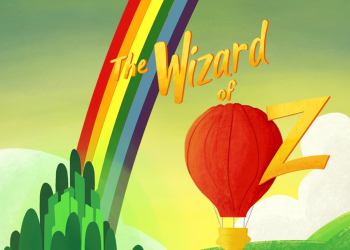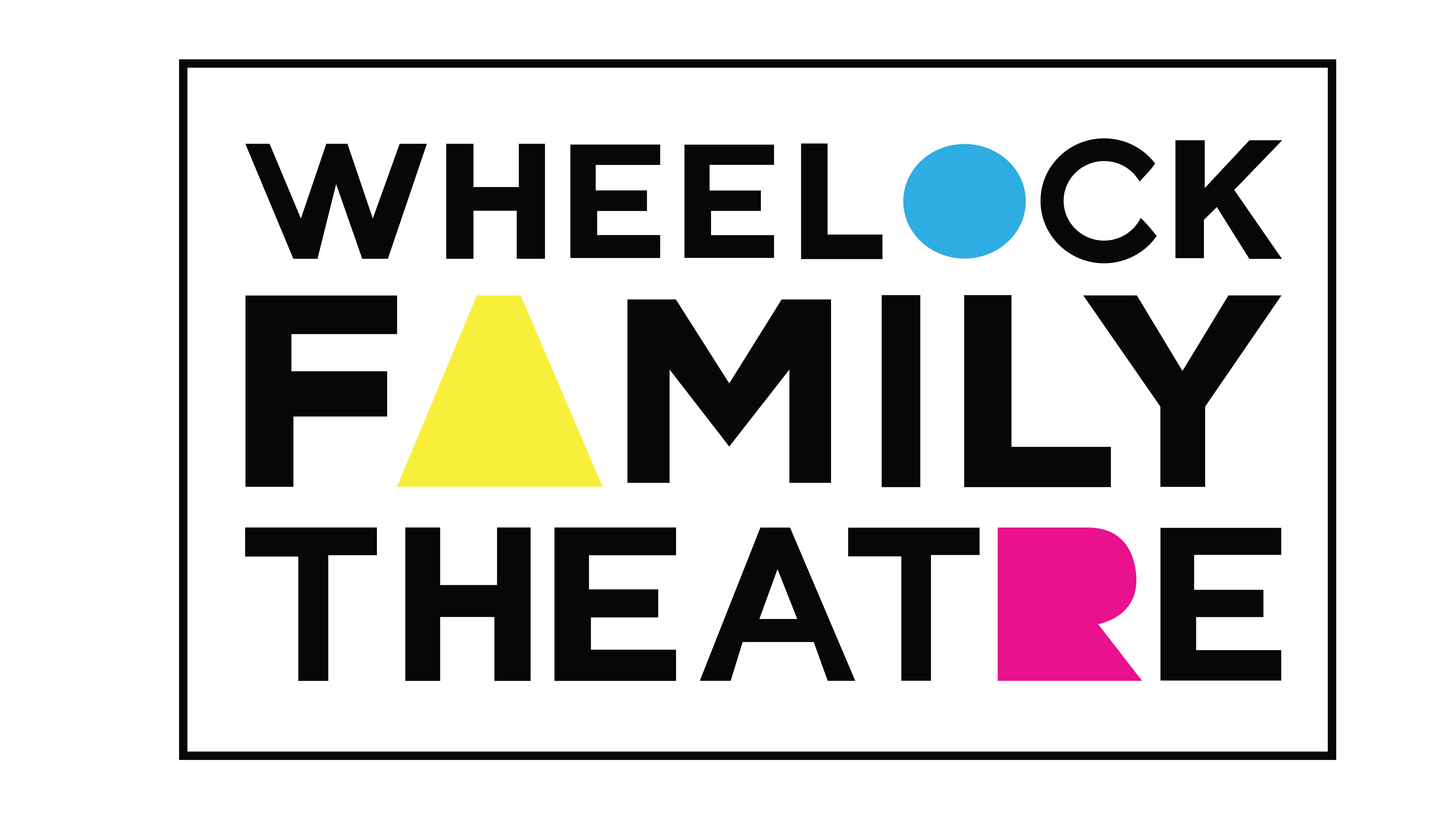WICKED WITCH OF THE WEST – Adaptations

The creative world that L. Frank Baum imagined in The Wizard of Oz has inspired countless artists across media. From original illustrations of its whimsical characters to entirely new stories carved out from its magical landscapes, countless adaptations of and responses to the story have come to life in the 122 years since the book’s initial publication. In this section, students can explore two of the most well-known adaptations, create adaptations of their own, and examine the challenges of preserving and continuing to tell beloved stories.
ACTIVITY 1: Exploring Adaptations
Ask students to brainstorm stories, books, movies, and shows that they think or know are adaptations of The Wizard of Oz.
Challenge students to research The Wiz and Wicked, or provide the information below.
The Wiz
- The Wiz is a musical adaptation of The Wizard of Oz reimagined in the context of Black culture in America. Written by Charlie Smalls and William F. Brown, The Wiz premiered on Broadway in 1975, won 7 Tony Awards, and ran for 4 years and 1,672 performances. A movie version of The Wiz, starring Diana Ross and Michael Jackson, among others, was released in 1978. The Wiz was a pioneering musical featuring an all-Black cast, paving the way for future musicals celebrating Black lives and stories. Plot-wise, The Wiz differs only slightly from The Wizard of Oz, but is told through different songs, dances, and a few new characters. Some of the most famous songs from The Wiz are Ease On Down The Road, Be A Lion, Brand New Day, and Home.
Wicked
- Wicked first debuted as a novel written by Massachusetts author Gregory Maguire in 1995, telling the untold backstory of the Wicked Witch of the West. Magure names her Elphaba (inspired by the initials LFB – L. Frank Baum). Maguire imagines Elphaba’s life from birth, education at Shiz University alongside Galinda (who later becomes the good witch Glinda), and experiences leading up to being dubbed the Wicked Witch and to Dorothy’s arrival in Oz. Wicked was later adapted into a musical which premiered on Broadway in 2003 to great acclaim. Some of the most famous songs from Wicked are Defying Gravity, Popular, Dancing Through Life, and For Good.
Watch some of all of the videos linked above. Ask students to describe the setting and mood of The Wiz and Wicked, based on these songs. What interesting choices have been made in terms of staging, sets, costumes, or other design elements? How closely do these resemble the choices made in The Wizard of Oz? Do these three stories feel like they take place in the same world?
With time for further research, students could…
- Compare and contrast two of the three productions: The Wizard of Oz, The Wiz, and Wicked.
- Select one particular character or theme and track its treatment and development across these three adaptations.
ACTIVITY 2: Creating Adaptations
Offer any or all of the following creative writing prompts:
- Write the backstory of the character of your choice – that is, their life before the events of The Wizard of Oz take place. Where were they born? What was their childhood like? What key events shaped who they are today and how they act in The Wizard of Oz?
- Write the next chapter in the life of a character of your choice – what happens to them right after the events of The Wizard of Oz conclude? Do any of the characters stay in touch or stay connected? What paths do their choices lead them down? How have they been shaped by the events of The Wizard of Oz?
- Write a chapter that could take place during the events of The Wizard of Oz, but that the audience of the show does not see. For example, what is Glinda doing during the whole time Dorothy is following the Yellow Brick Road? What does the Wizard do once he knows the guests are in the Emerald City, before they reach his chamber? What happens one day when the four travelers stop to have lunch? What is daily life like in Munchkinland?
- Select two characters that do not interact much during the events of The Wizard of Oz, and imagine what they would talk about or what they would do if they met. Perhaps a Munchkin stumbles upon the Lion in the forest, or a crow goes to visit a flying monkey!
ACTIVITY 3: Examining Beloved Stories
For many people, The Wizard of Oz is a beloved, nostalgic story, but even in stories we consider to be ‘classics,’ there may be elements, character tropes, or references that we now understand to be problematic or harmful. For this production of The Wizard of Oz, a Sensitivity Consultant, Rosalind Bevin, helped illuminate some of these pieces from the script, and, together with director Nick Vargas, reimagined them in new ways.
Below, we share some of the challenging elements we discovered when reading The Wizard of Oz script with fresh eyes. We describe how we thought about each challenge in our production. We also invite you to consider how you would address these challenges if you were directing a production of The Wizard of Oz. How would you preserve the story while making changes that make the script more inclusive, friendly, and accessible to people of all identities?
Status is very clear in the different character dynamics. Almost every character has a leader or a subordinate on some level. In the script, it is sometimes marked with intelligence, age, gender, or abilities. Young audiences really pick up on status and fairness/unfairness. Some examples of status dynamics include:
- Auntie Em & Uncle Henry — Zeke, Hickory, Hunk
- Glinda, Wicked Witch of the East — Munchkins
- Wicked Witch of the West — Winkies, Flying Monkeys
- Wizard of Oz — the Guard
At WFT we… considered opportunities to subvert the status dynamics at play. For example, instead of making the Wicked Witch all-powerful over the Winkies and the Flying Monkeys, we played with the witch acting childish and needy, lowering her status in the eyes of others. We also removed references to the Winkies as ‘slaves’ or an ‘enslaved nation.’
How would you experiment with status if you were creating a production of ‘The Wizard of Oz’?
How would you experiment with the characters of the Flying Monkeys if you were creating a production of ‘The Wizard of Oz’?
All of the characters in the story are assigned specific genders in the script. Dorothy is female and uses she/her pronouns, while the three friends she encounters on her journey are all male. The Wizard is male, the Good and Bad Witches are female. Even the trees in the forest are gendered, depicted as female.
At WFT we… wonder, in what ways are the genders of the characters important to the story? Do the characters have to be portrayed as the gender they are written as, in order for the story to make sense? We want to honor actors’ identities as much as they are comfortable or interested in for each of the characters they play. Therefore, the gender on the page does not necessarily have to align with what is played on stage in our production.
How would you experiment with gender if you were creating a production of ‘The Wizard of Oz’?
Much like the other fairytale-like characters in the story, the Munchkins are a fictional group of people who inhabit Munchkinland. In the story and the movie, the Munchkins are depicted as little people, and for many people the word brings to mind the actors with dwarfism who played the characters in the original film.
At WFT we… are reimagining this portrayal of the Munchkins. We do not intend to depict the munchkins as little people. Instead, we are creating our own version of the Munchkins through movement, voice, and costume.
How would you experiment with the characters of the Munchkins if you were creating a production of ‘The Wizard of Oz’?
In the story, the Wicked Witch has a group of Flying Monkeys that do her bidding. These characters are described as speaking in ‘gibbers’ instead of communicating in complete words and sentences as the rest of the characters in the story do.
At WFT we… acknowledge the long history of animalization and simianization by white people as a form of degradation and dehumanization of Black people in Europe and United States. The characters of the Flying Monkeys have been mistreated in different productions and iterations of this show, such as one production in which the only Black actor in a cast was the only actor cast as a Flying Monkey.
How would you experiment with the characters of the Flying Monkeys if you were creating a production of ‘The Wizard of Oz’?
Contact Us
If you have any questions or would like to share how you and your class engaged with the VLG, send us an email at WFTEd@bu.edu.

